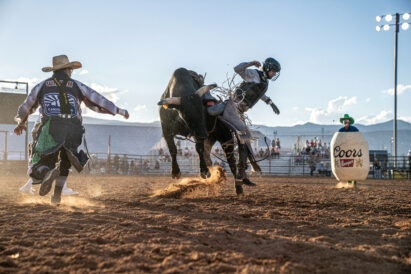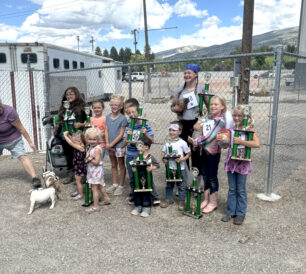Utah officials urge water conservation amid persistent drought
Reservoir levels holding steady, but heat and demand are accelerating declines
As Utah heads into the hottest months of the year, state officials are urging residents to take water conservation seriously. Despite some southern storms offering brief reprieve, drought conditions remain widespread, with 91% of the state still experiencing moderate to severe drought.
“Temperatures have soared, and with that comes a natural increase in outdoor watering,” said Candice Hasenyager, director of the Utah Division of Water Resources. “We want our lawns and gardens to look nice, and there are ways to do this through smart planning and new technologies that save water.”
Spring brought warmer-than-average temperatures across the state — 2.36 degrees Fahrenheit above normal, based on the 1991-2020 average — and a snowpack that was average to below average in many areas. The result? A shortened and fast-moving runoff season that is already putting pressure on water resources.
Though the Great Salt Lake saw a modest rise of 1.5 feet since November, peaking in mid-April at an elevation of 4,193.6 feet, the outlook remains uncertain as summer heat ramps up. Reservoirs across Utah have started to decline, a typical pattern for this time of year, but one that is now happening sooner than usual.
“Right now, we’re generally seeing outflows from reservoirs begin to exceed inflows,” Hasenyager explained. “That pattern typically sets in later in the summer, but this year’s heat is accelerating things. Across all sectors, we need to look for ways to be efficient with our finite water supply.”
Fortunately, due to strong runoff in previous years, Utah’s reservoir levels are still 8% above average for this time of year. However, without continued conservation, those reserves could be depleted faster than expected.
For Utah’s agricultural community — one of the sectors hardest hit by ongoing drought–the situation is particularly urgent. In response, the Utah Department of Agriculture and Food (UDAF) is offering low-interest Emergency Disaster Relief Loans (EDRL) to producers in 17 drought-impacted counties.
These counties include Beaver, Carbon, Emery, Garfield, Grand, Iron, Juab, Kane, Millard, Piute, San Juan, Sanpete, Sevier, Tooele, Uintah, Washington, and Wayne. Qualifying farmers and ranchers can apply for up to $100,000 per entity. The $2 million fund offers seven-year loans with no interest for the first two years and a 2.75% interest rate for the remaining five years. Applications will be accepted through Oct. 23, 2025.
The financial relief comes on the heels of Gov. Spencer J. Cox’s April 24 declaration of a state of emergency due to drought, underscoring the growing pressure on Utah’s agricultural economy and water systems.
In Utah, roughly 95% of the water supply originates from mountain snowpack. Reservoir storage helps extend that supply through hot, dry summers and drought years. As such, the Utah Department of Natural Resources continues to promote several water-saving programs to bolster drought resilience across the state.
For farmers, the Agricultural Water Optimization Program offers resources and support to reduce water usage while maintaining productivity. For residents, the long-running Slow the Flow campaign provides practical tips for both indoor and outdoor conservation.
Hasenyager encourages residents to visit SlowtheFlow.org for water-saving advice that can make a real difference. “Small actions add up,” she said. “Whether it’s installing efficient irrigation systems, fixing leaks, or simply adjusting sprinkler timers, every drop saved helps stretch our supply further.”
As Utah navigates another hot and dry summer, officials hope that awareness, preparation, and smart practices will help ease the impact of ongoing drought — and ensure water is available for future generations.

FILE – Low water levels at Wahweap Bay at Lake Powell along the Upper Colorado River Basin are pictured, June 9, 2021, at the Utah and Arizona border at Wahweap, Ariz. In a vote on Thursday, May 23, 2024, the Navajo Nation Council has unanimously approved a proposed water rights settlement that carries a price tag larger than any such agreement enacted by Congress. (AP Photo/Ross D. Franklin, File)
Helpful water-saving tips from Slow the Flow:
- Water lawns less frequently but more deeply–early morning or late evening is best.
- Use drip irrigation for gardens and flower beds.
- Fix indoor leaks promptly, especially faucets and toilets.
- Run dishwashers and washing machines only when full.
- Install low-flow showerheads and faucets.
For more information on drought relief loans and water conservation, visit:



